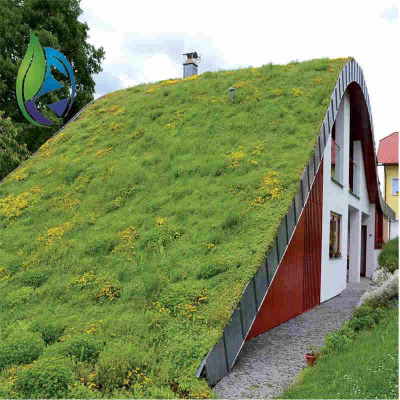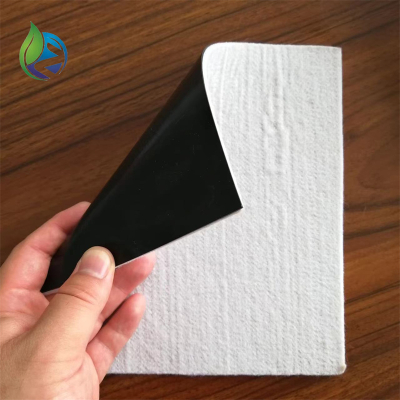How to Lay Bentonite Waterproof Blanket(GCL)
How to Lay Bentonite Waterproof Blanket (GCL)
The use of bentonite waterproof blanket (GCL) is becoming increasingly popular in civil engineering, construction, and environmental applications due to its exceptional waterproofing properties. This blanket is a geosynthetic material composed of bentonite clay and other synthetic materials, providing a reliable and cost-effective solution for water containment, landfill lining, and other waterproofing needs. Here's a comprehensive guide on how to lay a bentonite waterproof blanket (GCL) correctly for maximum efficiency and durability.
1. What is Bentonite Waterproof Blanket (GCL)?
Bentonite waterproof blanket (GCL), also known as geosynthetic clay liner, is a geosynthetic product that combines bentonite clay with two layers of nonwoven geotextiles. The bentonite waterproof blanket is designed to offer superior waterproofing capabilities by utilizing the natural swelling properties of bentonite when exposed to water. The product is commonly used in a variety of applications, including landfill liners, pond liners, reservoirs, and more.
When hydrated, the bentonite clay creates a self-healing, impermeable barrier that prevents the passage of water, making it an ideal choice for construction projects that require waterproofing solutions.
2. Preparation for Laying Bentonite Waterproof Blanket (GCL)
Before laying the bentonite waterproof blanket (GCL), proper preparation of the installation site is crucial to ensure its long-lasting performance:
Site Inspection: Ensure the site is level and free of any large debris, rocks, or other materials that could damage the bentonite waterproof blanket. The foundation should be smooth and compact to avoid puncturing or damaging the material during installation.
Soil Compaction: For areas like landfills, ponds, or reservoirs, it's essential to compact the soil underneath the bentonite waterproof blanket (GCL). This helps ensure that the blanket maintains uniform contact with the substrate and reduces the risk of shifting.
Excavation: For large-scale projects, excavation of the area may be required to create the proper depth for the bentonite waterproof blanket (GCL) installation. The depth will depend on the project specifications, which should be carefully followed.
Climate Considerations: Ensure the area is not too wet or too dry. High moisture levels or extreme dryness can affect the installation process and performance of the bentonite waterproof blanket (GCL). Ideally, install it during favorable weather conditions to ensure optimal performance.
3. Laying the Bentonite Waterproof Blanket (GCL)
Once the site is prepared, you can begin laying the bentonite waterproof blanket (GCL). Follow these steps for a smooth and successful installation:
Unroll the GCL Sheets: Carefully unroll the bentonite waterproof blanket over the prepared surface. Take care not to damage the material during this process. Ensure that the sheets are laid flat and free of wrinkles or folds that could create uneven surfaces.
Overlap the Seams: When laying multiple sheets of bentonite waterproof blanket (GCL), it is important to overlap the seams by at least 12 inches (30 cm) to ensure full coverage. This prevents any potential gaps or weaknesses in the waterproofing layer.
Align the Material: Align the edges of the bentonite waterproof blanket carefully to maintain uniformity. The material should be placed with the geotextile layers facing outward, as these layers help in bonding the bentonite clay with the underlying substrate.
Securing the Blanket: To secure the bentonite waterproof blanket (GCL) in place, use stakes or sandbags around the perimeter of the material. This helps to prevent wind from blowing it away or shifting during the installation process.
4. Hydration and Activation of Bentonite Clay
One of the most important steps in ensuring the functionality of the bentonite waterproof blanket (GCL) is activating the bentonite clay. Upon hydration, the bentonite expands and forms a tight, impermeable seal. To do this:
Watering the GCL: Once the blanket is laid out, thoroughly water the bentonite waterproof blanket using a sprinkler system or hose. Ensure the entire surface is adequately hydrated. The amount of water required will depend on the project specifications and the environmental conditions.
Check for Even Hydration: It is important to ensure that the bentonite waterproof blanket (GCL) is uniformly hydrated to achieve consistent performance. Uneven hydration can lead to areas of the blanket that may not perform as effectively in blocking water.
5. Covering and Protection
After the bentonite waterproof blanket (GCL) has been properly laid and hydrated, it should be covered to protect it from UV radiation, extreme weather, and physical damage:
Covering the GCL: In applications like landfills or ponds, a protective cover may be required to shield the bentonite waterproof blanket from direct exposure to sunlight or other harsh elements. This can be achieved by covering the material with a layer of soil, geotextile fabric, or other protective materials.
Monitor the Installation: Regularly inspect the installation to ensure there are no damages, erosion, or signs of inadequate performance. Correct any issues as they arise to maintain the integrity of the waterproofing system.
6. Conclusion
Laying a bentonite waterproof blanket (GCL) is a critical task that requires careful preparation, proper installation techniques, and attention to detail. By following the correct steps, such as preparing the site, ensuring proper hydration, and securing the material, you can ensure that the bentonite waterproof blanket performs optimally for years to come. Whether used for landfill liners, pond liners, or other water containment systems, the bentonite waterproof blanket (GCL) provides a reliable, cost-effective, and sustainable solution for waterproofing needs.





